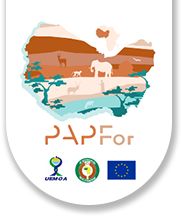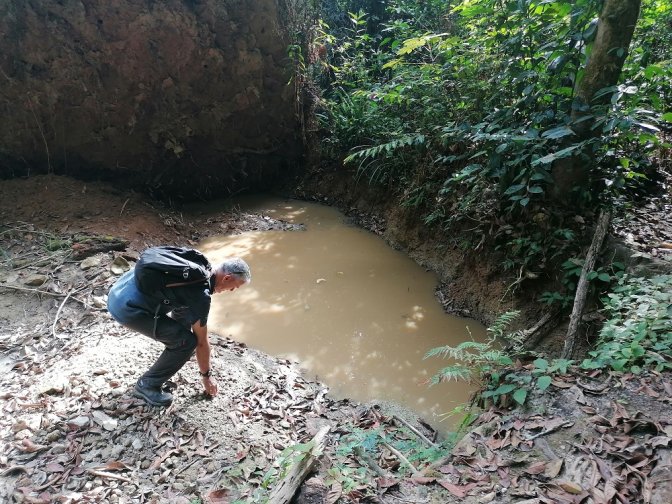Home / Guinean forests / Threats / Mining / Artisanal and small-scale mining
Artisanal and small-scale mining
Artisanal and small-scale mining can be defined (OECD) as mining that involves mainly simplified forms of exploration, extraction, processing and transportation, and manual labour, with limited mechanisation. It is generally a low capital-intensive operation using labour-intensive technologies.
The sector is largely informal but provides an income for millions of people worldwide. Regulation of the sector is often inadequate and it is difficult to estimate its true contribution to a country’s economy (Extractive Industries Transparency Initiative, 2021).
In West Africa, this type of mining is mainly carried out by gold miners (artisanal gold mining) or diamond miners (artisanal diamond mining), although artisanal operations do exist in other areas (river or beach sand, semi-precious stones, etc.). Gold panning is by far the dominant illegal activity, involving several thousand people.
West African countries are trying to limit and regulate artisanal mining (gold panning and diamond mining) but these activities are still often carried out illegally in areas that are off-limits to exploitation, particularly in protected areas.
This type of mining is also generally ‘unprofessional’, without modern techniques or any concern for the environment. When a gold mining commences at a site, several hundred or even several thousand miners move into a previously uninhabited area.
In addition to the usual impacts of mining, artisanal and small-scale gold and diamond mining in forested areas often requires the areas to be cleared in advance, leading to forest degradation, habitat loss, land degradation, increased storm water runoff, and soil erosion.
Local bushmeat markets develop around artisanal mining sites and have a negative impact on animal populations. Endangered species such as chimpanzees are not spared, mainly because of the particularly intense poaching around artisanal mining camps where bushmeat is usually the main source of protein.
Traditionally used in gold panning, mercury is used to separate gold from rocks or sand, as it adheres to the gold, forming an amalgam, which is then heated to evaporate the mercury and leave the gold. Cyanide can also be added to recover (additional) gold from already processed tailings.
Without proper management measures, elemental mercury can therefore be released to air, land, surface and groundwater in liquid and gaseous form during ore processing and amalgam burning.
This elemental mercury can transform into an organic form that becomes concentrated as it moves up the food chain, causing neurological damage and other adverse effects in humans. Some gold miners add cyanide to mercury, which accelerates the dispersion of mercury into the air and aquatic environments. This is because cyanide-mercury complexes are water-soluble and highly mobile in water. When the mercury cyanide complexes break down, the mercury is released into the water, or disperses into the air.


